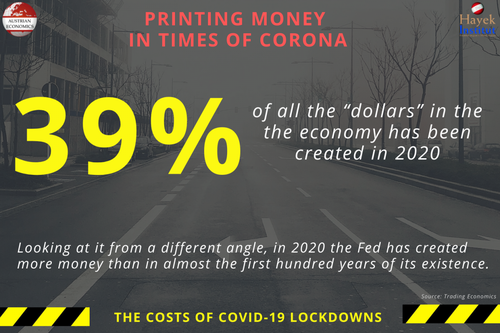JUNKie
BONDS
Notes
Since the Global Financial Crisis, monetary policy has become extremely accommodative in all developed countries around the world. It’s odd to see the similarities considering the brunt of the impact was focused in the U.S. financial system and then Europe. A similarity that is not odd is the growth of government around the world. Central planners have used this period to their advantage, as they always do when given the opportunity, intervening in any manner possible, spending any dollar they can get their hands on, and complaining about problems that they’re directly or indirectly responsible for while providing fixes that make the problem worse. The worst part is that politicians are experts at convincing the populace it is a certain party, group, or someone else that is to blame for your problems. Even if the economy is so splendid that everybody’s life is terrific there is always the other party to keep you frightened about.
Politicians and governments always will expand their power until a catalyst causes an uprising or they destroy themselves.
The U.S. is teetering on both.
Printing Money In The Age Of COVID
The coronavirus has dominated all of our lives in recent months. Radical paths were taken by politicians in the form of lockdowns to contain the pandemic.
But we should recognize that even if the coronavirus is a (major) challenge for us, we always have to keep a holistic view of world events. Just as there are epidemiological factors to consider in this crisis, there are also economic, social, cultural, political and other health factors at play.
It is precisely these other factors that are so often forgotten in the panicky reporting, in the constant, manic tracking of the current infection numbers, that we want to take a look at in our series “The Costs of Coronavirus Lockdowns” in the coming weeks.
Monetary policy is the second primary tool, alongside fiscal policy, used by governments to influence economic activity. When a crisis hits, an economy is stimulated either by the state budget – which arises from the taxpayers – or silently through monetary expansion. By either lowering interest rates, issuing government-backed securities, or even purchasing corporate bonds the central banks increase the money supply in the economy. Ever since the beginning of the crisis, the U.S. Federal Reserve has done all of the above.
One of the most popular measures of the money supply used by economists is M1. It consists of the most highly liquid assets. In other words, the most easily exchangeable assets are used as payment for goods and services. As Trading Economics data shows, the Fed has created 39% of all the “dollars” in the economy in 2020. To put it on its head, in 2020 the Fed has created more money than in almost a hundred years of its existence.
Monetary policy effectiveness has its boundaries.
As good as it might seem at first glance, creating money “out of thin air” doesn’t bring prosperity.
It is true, inflation still hasn’t start banging on our doors. But looking no further than the asset prices, we can see that the low inflation rate is masked by the asset price inflation. Even with the sharp drop of the GDP and an unemployment rate that stands more than double the rate before the crisis started, the S&P 500 is more than 10% higher than on the day the pandemic rolled around. This also shows who profits from the economic response to the COVID-19 crisis: those with assets, i.e. those already wealthy anyway.
The middle and lower classes, meanwhile, lose out, either having their businesses shut down or stuck in unemployment or short-term work schemes.
Thus, the equality warriors of the political elite continue to increase economic inequality in the fight against the Coronavirus.
Tyler Durden
Sat, 03/20/2021 – 09:20
